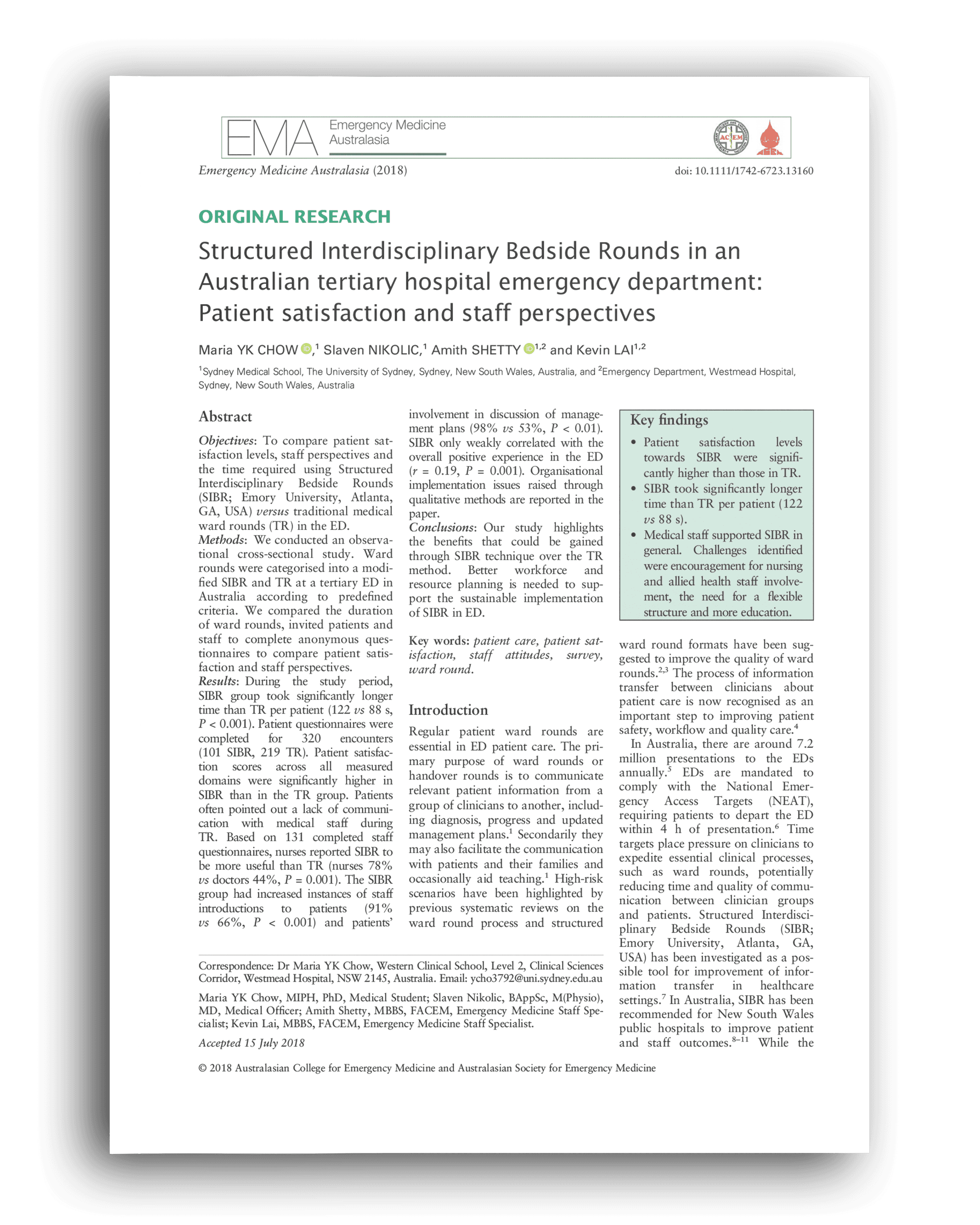
SIBR Australian tertiary hospital ED - Patient satisfaction & staff perspectives

Top Results
Overview
In a study conducted at Westmead Hospital, Sydney, the implementation of Structured Interdisciplinary Bedside Rounds (SIBR) in an emergency department (ED) significantly improved patient satisfaction and staff perspectives compared to traditional ward rounds (TR).
Objectives
To compare patient satisfaction levels, staff perspectives, and the time required using Structured Interdisciplinary Bedside Rounds (SIBR) versus traditional medical ward rounds (TR) in the ED.
Methods
The study was an observational cross-sectional design conducted at a tertiary ED in Australia. Ward rounds were categorized into SIBR and TR according to predefined criteria. The study involved:
Patient Satisfaction Study
Completed by 320 patients who met the inclusion criteria.
Staff Perspectives Study
Completed by 131 ED clinical staff members.
Results
Patient Satisfaction
Higher across all measured domains in the SIBR group compared to the TR group.
Confidence in ED team: 96% (SIBR) vs. 80% (TR)
Understanding treatment plans: 75% (SIBR) vs. 62% (TR)
Overall ED experience: 95% (SIBR) vs. 90% (TR)
Staff Perspectives
Nurses reported SIBR to be more useful than TR (78% vs. 44%).
Increased staff introductions to patients: 91% (SIBR) vs. 66% (TR)
Patient involvement in management plans: 98% (SIBR) vs. 53% (TR)
Duration
SIBR rounds took significantly longer per patient (122 seconds) compared to TR (88 seconds).
Conclusion
Structured Interdisciplinary Bedside Rounds (SIBR) in the emergency department led to higher patient satisfaction and improved staff perspectives compared to traditional ward rounds. However, SIBR took longer to complete, indicating the need for better workforce and resource planning to support sustainable implementation in the ED.




